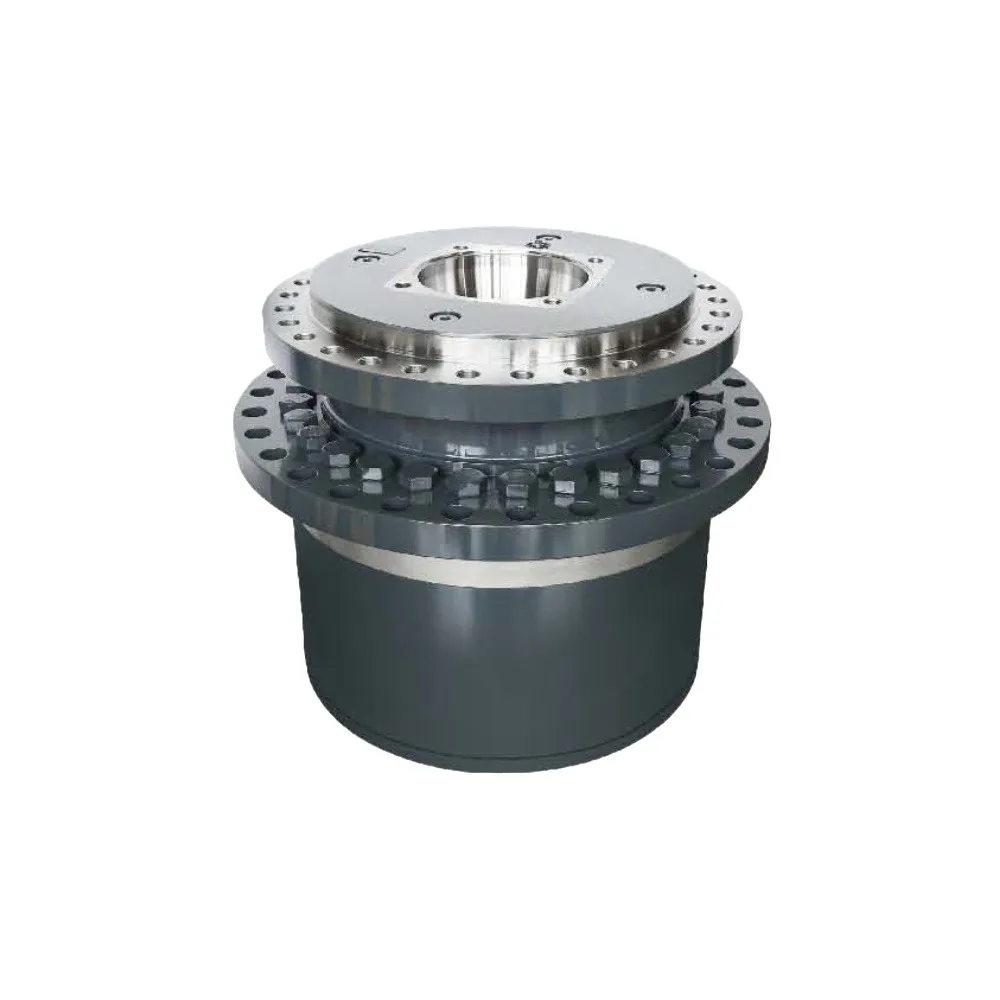If you’ve ever wondered how your electric vehicle, industrial machine, or even a power tool transfers motion with such precision, the answer often lies in a planetary gearbox system. And at the heart of its performance is something called the gear ratio. In this post, we’ll break down gear ratios in planetary gearboxes in a way that’s easy to understand—even if you’re not an engineer.
Whether you’re a mechanical enthusiast, a technician, or just curious about how things work, understanding gear ratios can help you better choose or work with these systems. Let’s dive in.
What Is a Planetary Gearbox?
Before we get to the ratios, let’s first understand what a planetary gearbox is.
A planetary gearbox (also called an epicyclic gearbox) consists of three main components:
-
Sun gear – the central gear.
-
Planet gears – smaller gears that revolve around the sun gear.
-
Ring gear – the outer ring with internal teeth that meshes with the planet gears.
These components rotate in a way that can reduce speed and increase torque. That’s what makes planetary gearboxes ideal for high-precision applications where compactness and efficiency are essential.
Why Are Gear Ratios So Important?
The gear ratio in a planetary gearbox defines the relationship between the input speed and the output speed. It also affects how much torque the gearbox can deliver.
Put simply:
Gear Ratio = Input Speed / Output Speed
If a motor rotates at 1000 RPM and the output is 250 RPM, the gear ratio is 4:1. This means the gearbox reduces speed by four times and increases torque by the same factor.
So, understanding the gear ratio helps you:
-
Determine how much torque you can get.
-
Calculate how much speed reduction you’ll have.
-
Pick the right gearbox for your application.
How Gear Ratios Work in Planetary Systems
In a planetary system, gear ratios aren’t as simple as in traditional gear setups. That’s because different components can be the input or output—giving you flexibility, but also making things a bit more complex.
Let’s break it down with a few examples.
Common Configurations in Planetary Gearboxes
1. Sun Gear as Input, Ring Gear Fixed, Carrier as Output
This is the most common setup in planetary gearboxes. Here’s what happens:
-
The sun gear receives the input.
-
The ring gear stays stationary.
-
The carrier (holding the planet gears) is the output.
This configuration provides a reduction in speed and an increase in torque.
Gear Ratio Formula:
Gear Ratio = 1 + (Ring Gear Teeth / Sun Gear Teeth)
Example:
-
Sun Gear: 20 teeth
-
Ring Gear: 60 teeth
Then:
Gear Ratio = 1 + (60 / 20) = 4:1
That means for every 4 rotations of the input (sun gear), you get 1 rotation of the output (planet carrier).
2. Sun Gear as Input, Carrier Fixed, Ring Gear as Output
This setup provides an overdrive or speed increase instead of reduction.
Gear Ratio Formula:
Gear Ratio = 1 / [1 + (Ring Gear Teeth / Sun Gear Teeth)]
Using the same example:
Gear Ratio = 1 / [1 + (60 / 20)] = 1 / 4 = 0.25:1
So the output turns four times faster than the input, but with much less torque.
3. Ring Gear as Input, Sun Gear Fixed, Carrier as Output
This setup is similar to the first one, but the ring gear drives the system.
Gear Ratio Formula:
Gear Ratio = 1 + (Ring Gear Teeth / Sun Gear Teeth)
Same ratio as before: 4:1
You can see how the component you fix or drive makes a big difference in the gear ratio and system behavior.
Advantages of Using Planetary Gear Systems
Why use a planetary gearbox instead of a regular gear system? Here are a few benefits:
1. High Torque in a Compact Size
Planetary gear systems spread the load across multiple planet gears. This allows them to deliver high torque without increasing the size of the gearbox.
2. Efficient Power Transmission
Thanks to the multi-gear engagement, planetary systems are more efficient and reduce power loss.
3. Versatile Gear Ratios
You can change the gear ratio just by modifying which gear is fixed and which is used for input/output. That flexibility is especially useful in robotics, automation, and EVs.
4. Balanced Load Distribution
With multiple planet gears engaging at once, the load is balanced. This reduces wear and increases the lifespan of the gearbox.
How to Choose the Right Gear Ratio
Choosing the right gear ratio for a planetary gearbox depends on your application.
Ask Yourself:
-
Do I need high torque or high speed?
-
What is my motor’s RPM and torque?
-
What is the load requirement of my application?
General Guidelines:
-
If you need more torque: Choose a higher gear ratio (e.g., 5:1, 10:1)
-
If you need more speed: Choose a lower gear ratio (e.g., 2:1 or even 1:1)
Remember, higher ratios reduce output speed but multiply torque. Lower ratios maintain speed but deliver less torque.
Applications That Use Planetary Gearboxes
You’ll find planetary gearboxes in many modern systems, including:
-
Electric vehicles (EVs) – For efficient torque delivery
-
Industrial robots – For precision motion control
-
Aerospace systems – Where compact, powerful solutions are key
-
Wind turbines – To handle varying wind speeds
-
CNC machines and conveyors – Where controlled speed and torque are vital
Maintenance Tip: Keep an Eye on Lubrication
While planetary gearboxes are known for their durability, proper lubrication is crucial for performance. Always check manufacturer guidelines on the type and frequency of lubrication needed.
Also, ensure regular inspection of seals and bearings to avoid gear misalignment and wear.
Final Thoughts
Understanding gear ratios in planetary gearboxes doesn’t have to be complicated. Once you grasp the basics—like the role of the sun, planet, and ring gears—it becomes clear how changing configurations can dramatically alter speed and torque.
Whether you’re designing a robotic arm or repairing a drive system, knowing your gear ratios helps you choose the right gearbox for maximum efficiency and performance.






